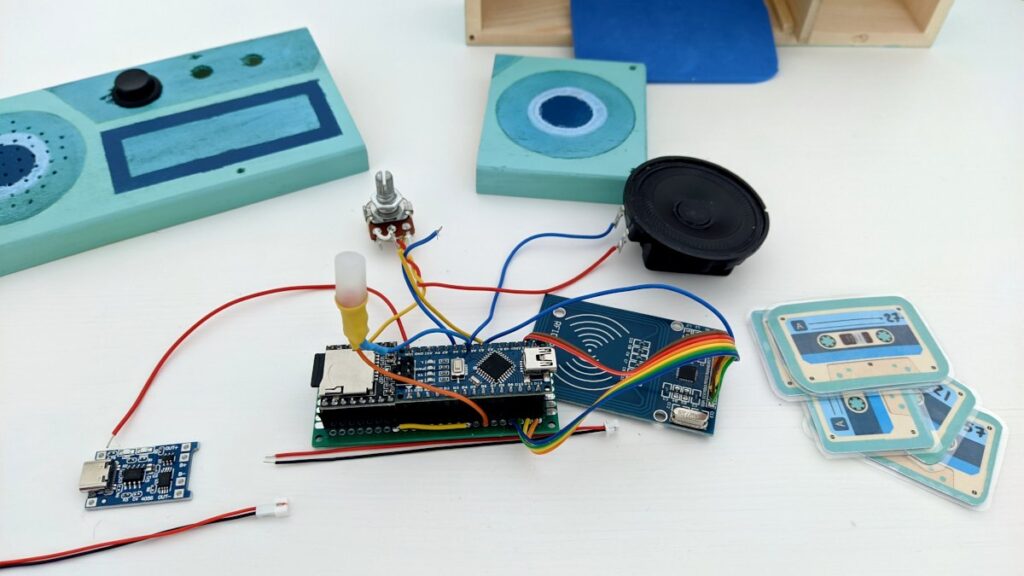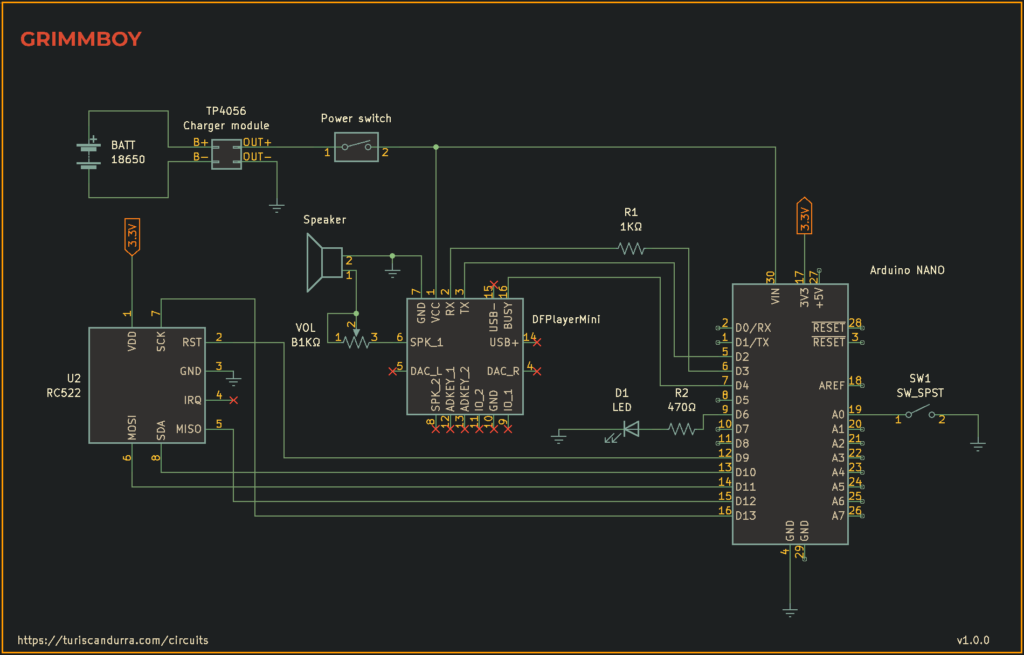My toddler niece is too young to read but always in for a good story. So I created for her a portable audio player of children stories.
It’s got a cool retro vibe for the enclosure and it’s very easy to operate: you just choose one of the many ‘tapes’ from its drawer and place it on top of the player to start playing that audiobook track.

It’s multilingual! I managed to find audio recordings of the same story in multiple languages, so for most stories there are four different tapes, one for each language. I believe this could be a good language learning device.
This project was inspired by the open source project Tonuino, from which I also borrowed the idea of using NFC tags to trigger an Arduino-controlled mp3 player. My player has fewer functions but is much easier to set up, is battery-powered, and uses a custom data format for the tags so they can be configured using a smartphone.
Inside the enclosure, the Grimmboy circuit uses an mp3 player chip controlled by an Arduino Nano that’s also connected to an RFID reader.
Each tape has an NFC tag hidden inside, while all the audio tracks are stored on a microSD card.
On the top side of Grimmboy there’s a pause/unpause button, an LED that blinks when no track is playing, and a volume knob.



The lithium-ion battery is recharged using a common USB-C smartphone charger, and is protected by a circuit that prevents overcharging and overdischarging.
Even though the mp3 player supports stereo playback, for energy saving reasons I chose to make it mono and include only one speaker.
The cassette tapes contain a minuscule radio chip (Ntag213, aka MiFare Ultralight C), writable using a common tag editing app for Android. However, since I created over a hundred cards I automated the job and coded a batch-writing tool (whose source code is available, see link below).
Each tag is sandwiched between two printed pieces of paper and then laminated into a microcassette-card. Side A has the story title, cover artwork, and a language flag; on side B I wrote the running time and the tag ID (which I kept note of so that if a tag gets lost I can recreate it).

One function I did not implement is automatic poweroff. It would require a power latching circuit or a more modern microcontroller but I’ll leave that to a future version.
Source code
If you want to build your own Grimmboy you can find the source code and more development notes here: github.com/TuriSc/grimmboy